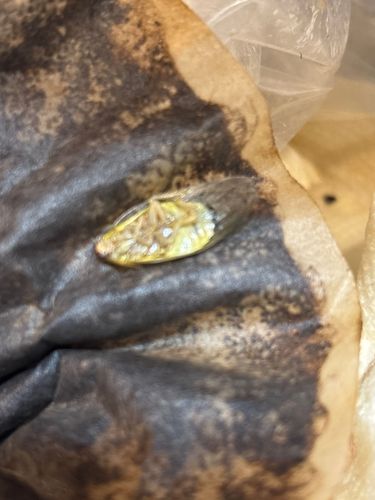Cicada (Exuvia)
Scientific Name: Cicada (various genera and species within Cicadidae)
Order & Family: Order: Hemiptera, Family: Cicadidae
Size: The exuvia (shed exoskeleton) in the image would likely be from a cicada that, as an adult, would range from 2 to 5 centimeters (0.8 to 2 inches) in body length, depending on the species.

Natural Habitat
Cicadas are found globally in temperate and tropical regions. Nymphs live underground, typically in forests, woodlands, and areas with trees. Adults emerge from the ground and inhabit trees and shrubs.
Diet & Feeding
As nymphs, cicadas feed on xylem fluid from the roots of trees and woody plants. Adult cicadas feed minimally, if at all, also on xylem fluid, but their primary purpose is reproduction.
Behavior Patterns
Cicada nymphs live underground for most of their lives, feeding on tree roots. When mature, they emerge, shed their exoskeleton (as seen in the image), and transform into winged adults. Adults are known for their loud, distinctive songs, used to attract mates. They typically live only a few weeks as adults, focusing on reproduction.
Risks & Benefits
Cicadas are generally harmless to humans. They do not sting or bite and are not known to transmit diseases. While large emergences can cause some aesthetic damage to young tree branches due to egg-laying, they rarely cause significant harm to mature trees. Ecologically, they are a food source for many animals, and their burrowing activity can help aerate soil. The exuvia (shed skin) itself poses no risk and is a common sight after nymphs emerge.
Identified on: 8/27/2025